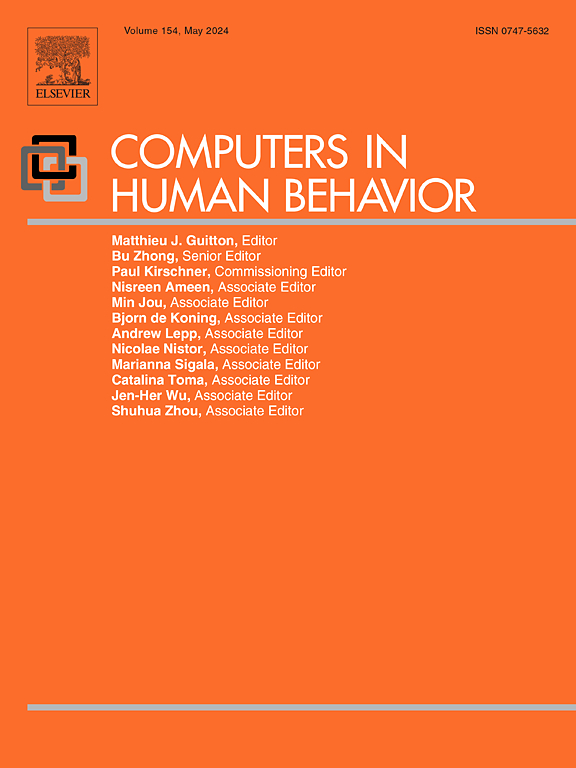Reconnecting with nature to disconnect from screens: The relationship between nature exposure and problematic short-form video use among adolescents and its underlying mechanisms
IF 9
1区 心理学
Q1 PSYCHOLOGY, EXPERIMENTAL
引用次数: 0
Abstract
The prevention of adolescent problematic short-form video use (PSVU) has increasingly garnered attention. In recent years, researchers have focused on the potential benefits of nature exposure in alleviating problematic substance or behavioral use, given its ability to reduce stress. However, most studies focus on substance addiction, with limited research on digital detox. Additionally, the heterogeneity of different types of nature exposure has been overlooked. Moreover, the longitudinal and within-person impacts of nature exposure on PSVU remain unexplored. To address these gaps, this study used cross-sectional, longitudinal, and weekly-diary designs to explore the relationship between nature exposure and PSVU, along with the mediating roles of positive emotion and interpersonal connection. Specifically, Study 1a (N = 290) used a cross-sectional design, and multiverse-style analysis revealed that, except for the incidental nature exposure, the remaining three types of nature exposure (intentional outdoor, intentional indoor, and indirect) could significantly and negatively predict subjective PSVU. Study 1b (N = 282) employed a longitudinal design, and cross-lagged analysis found that increased intentional outdoor, indoor, and indirect nature exposure at T1 led to decreased PSVU at T2. Study 2 (N = 180) used a seven-week diary study and multilevel mediation analysis to examine whether the relationship between nature exposure and adolescent PSVU was mediated by positive emotion and interpersonal connection. At the within-person level, the results revealed that intentional outdoor nature exposure positively related to interpersonal connection in the same week and one week later, resulting in a reduction in PSVU the next week. The theoretical and practical implications, as well as future directions, were discussed.
与自然重新连接,脱离屏幕:青少年接触自然与有问题的短视频使用之间的关系及其潜在机制
青少年有问题的短视频使用(PSVU)的预防日益引起人们的关注。近年来,研究人员一直关注暴露在自然环境中减轻问题物质或行为使用的潜在好处,因为它能够减轻压力。然而,大多数研究都集中在物质成瘾上,对数字排毒的研究很少。此外,不同类型自然暴露的异质性被忽视了。此外,自然暴露对PSVU的纵向和人内影响仍未被探索。为了解决这些空白,本研究采用横断面、纵向和周日记设计来探讨自然暴露与PSVU的关系,以及积极情绪和人际联系的中介作用。具体而言,研究1a (N = 290)采用了横断面设计,多宇宙风格分析显示,除了偶然的自然暴露外,其余三种自然暴露类型(故意室外,故意室内和间接)可以显著负向预测主观PSVU。研究1b (N = 282)采用纵向设计,交叉滞后分析发现,T1时有意的室外、室内和间接的自然暴露增加导致T2时PSVU下降。研究2 (N = 180)采用为期7周的日记研究和多层次中介分析来检验自然暴露与青少年PSVU之间的关系是否受积极情绪和人际联系的中介作用。在个人层面上,结果显示,在同一周和一周后,有意的户外自然暴露与人际关系呈正相关,导致下一周的PSVU减少。讨论了理论和实践意义以及未来的发展方向。
本文章由计算机程序翻译,如有差异,请以英文原文为准。
求助全文
约1分钟内获得全文
求助全文
来源期刊

Computers in Human Behavior
Multiple-
CiteScore
19.10
自引率
4.00%
发文量
381
审稿时长
40 days
期刊介绍:
Computers in Human Behavior is a scholarly journal that explores the psychological aspects of computer use. It covers original theoretical works, research reports, literature reviews, and software and book reviews. The journal examines both the use of computers in psychology, psychiatry, and related fields, and the psychological impact of computer use on individuals, groups, and society. Articles discuss topics such as professional practice, training, research, human development, learning, cognition, personality, and social interactions. It focuses on human interactions with computers, considering the computer as a medium through which human behaviors are shaped and expressed. Professionals interested in the psychological aspects of computer use will find this journal valuable, even with limited knowledge of computers.
 求助内容:
求助内容: 应助结果提醒方式:
应助结果提醒方式:


